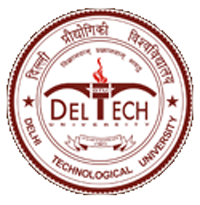Please use this identifier to cite or link to this item:
http://dspace.dtu.ac.in:8080/jspui/handle/repository/22044Full metadata record
| DC Field | Value | Language |
|---|---|---|
| dc.contributor.author | SHUKLA, PRADYUMN | - |
| dc.date.accessioned | 2025-08-01T06:07:34Z | - |
| dc.date.available | 2025-08-01T06:07:34Z | - |
| dc.date.issued | 2025-05 | - |
| dc.identifier.uri | http://dspace.dtu.ac.in:8080/jspui/handle/repository/22044 | - |
| dc.description.abstract | The increasing reliance on data-driven decision-making has brought intuitive database access into limelight, particularly for inexperienced users. Text-to-SQL technologies bridge this shortcoming by converting natural language queries to SQL queries and thereby render database interaction more intuitive. Large Language Models have also influenced the Text2SQL system paradigm towards predicting correct and context-aware SQL. This survey maps the historical development of Text2SQL approaches from rule-based systems to LLM- based neural models. Extensive efforts have gone into using prompt engineering, schema alignment methods, and domain fine-tuning to ensure higher accuracy and generality. The models now exhibit significant progress in understanding complex queries as well as precise SQL code generation through emergent Large Language Model capabilities. The early systems had extremely strong template-based or rule-based mechanisms, whereas generation these days is extremely advanced neural systems brimming with domain knowledge and highly specialized embeddings. Although LLMs, particularly GPT and BERT, have really set the bar high for query interpretability and execution accuracy, there are significant challenges regarding meeting the needs of domain specificity, intricate queries, and scalability across heterogeneous schemas. It also pointed out how the RAG generation mechanism has been integrated and called for a paradigm shift towards adopting TAG for richer schema interaction. Future directions involve developing explainable models, fine-tuning multiturn conversational capabilities, and optimizing computational efficiency toward robustness and ease of use for Text2SQL systems. By addressing the gaps, the study lays the foundations for innovations in database querying, using LLMs to redefine accessibility and usability for a wide range of users. | en_US |
| dc.language.iso | en | en_US |
| dc.relation.ispartofseries | TD-8123; | - |
| dc.subject | TEXT-TO-SQL | en_US |
| dc.subject | LARGE LANGUAGE MODELS (LLMS) | en_US |
| dc.subject | RETRIEVAL AUGMENTED GENERATION (RAG) | en_US |
| dc.subject | PROMPT ENGINEERING | en_US |
| dc.subject | QUERY INTERPRETABILITY | en_US |
| dc.subject | CROSS-DOMAIN GENERALIZATION | en_US |
| dc.subject | DATA-DRIVEN DECISION-MAKING | en_US |
| dc.subject | COMPLEX QUERIES | en_US |
| dc.subject | TAG | en_US |
| dc.title | ANALYSIS AND DEVELOPMENT OF TEXT-TO-SQL TRANSLATION SYSTEM USING LARGE LANGUAGE MODELS (LLMs) | en_US |
| dc.type | Thesis | en_US |
| Appears in Collections: | MTech Data Science | |
Files in This Item:
| File | Description | Size | Format | |
|---|---|---|---|---|
| Pradyumn Shukla M.Tech.pdf | 2.59 MB | Adobe PDF | View/Open |
Items in DSpace are protected by copyright, with all rights reserved, unless otherwise indicated.



